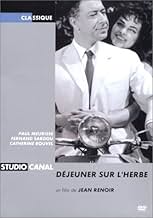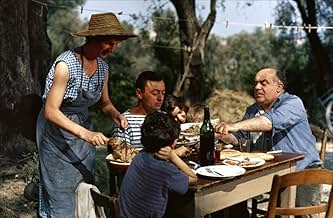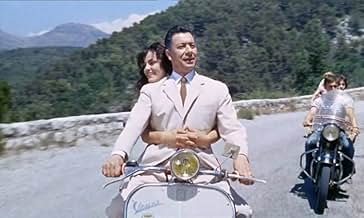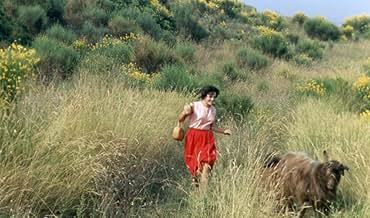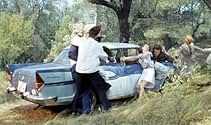An unusual intro sequence involves layering the diegetic world through an odd specularity utilizing newsreel interviews and binding characters to different milieux. There are a plethora of tongue-in-cheek juxtapositions of science and nature which reminds one of Makavejev's oeuvre (especially in the link being sexuality). Rare Renoirian soft focus accompanies one-shot closeups while the self-reflexivity leads to a near mocking of the famous Renoir stylistic system. Depth of field is arranged where characters continuously 'pop up' in the different planes. Groups are framed in long shots. Dejeuner sur L'Herbe is almost bizarre in its referencing to the French New Wave and the Tradition of Quality. FNW is treated as a horizon running perpendicular to the tight-rope Renoir traverses toward it while the ToQ is set up as a gorge below which has a perverted inversion in its reflection as it to position itself in the clouds like Gods. Renoir seems to make a journey of this film - a personal journey toward his favored colleagues but with the knowledge that his alignment is bound to his past. "Every film is a confession" is a Vuillermoz quote well addressed in this film. The pan flautist is a famous Renoir motif and appropriately placed in Dejeuner where Renoir as auteur becomes a force of nature - he becomes the milieu (and perhaps always was). The picnickers seem indifferent to the Pan character's supernatural powers revealing a cynicism that has popped up many times with Renoir. "In every man a satyr sleeps" is no revelation, but a warning about the internal and external truths which become convoluted and disparate through the individual's attempts to manage them. It has been noted that Dejeuner lacks in subtlety. I believe that it was the intention as the film text is simply overdetermined in its self-reflexivity that the specular nature of the film cannot be ignored. The Damascus reference troubles me, while the Hitler-orator allusions and scooter ride seem all too obvious as components of an autobiography. This film is important for understanding Renoir as an auteur.

